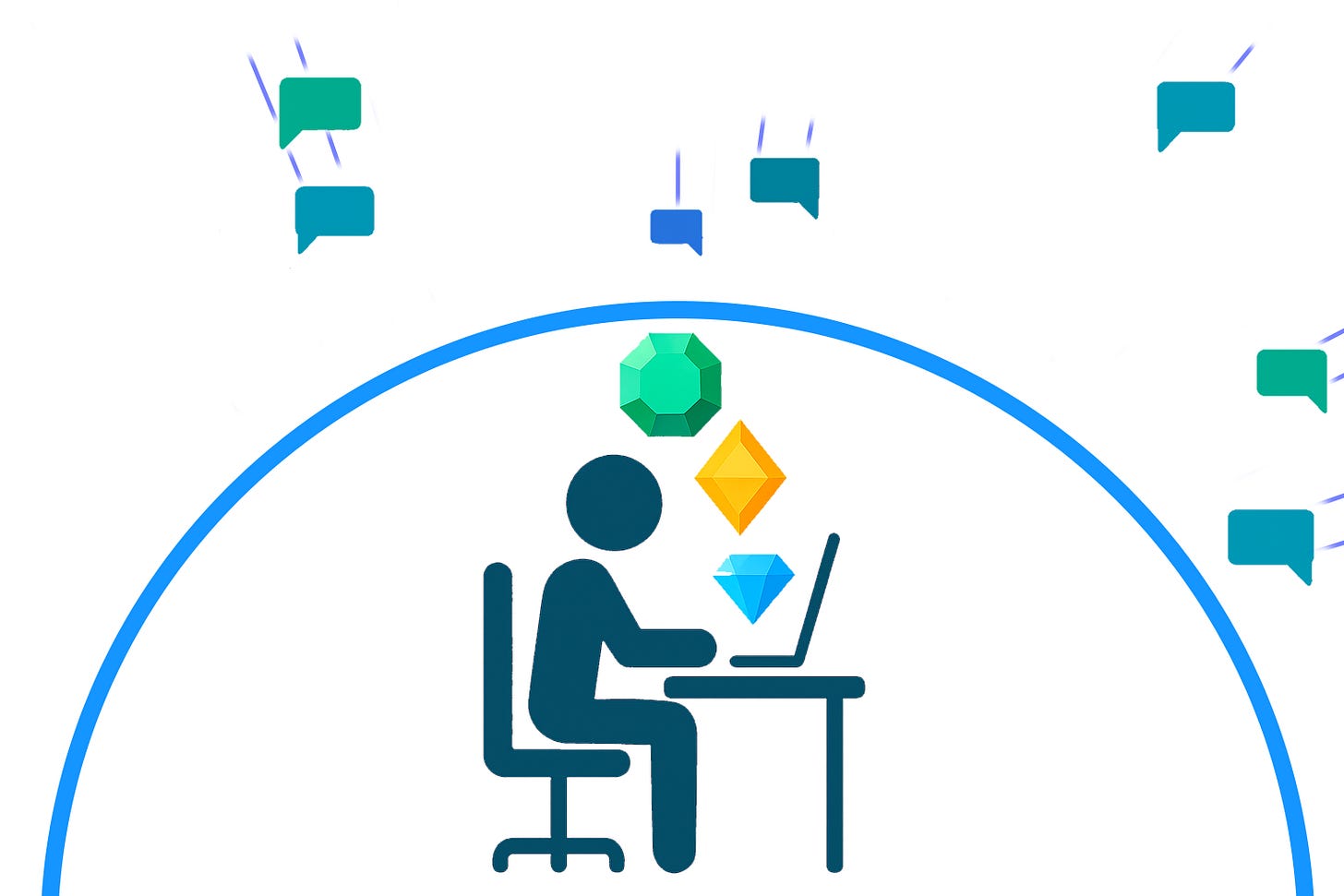Herding Chats
"Chats" is only one letter away from being "Chaos"
Your Triage Shield1 is now successfully protecting you from your email inputs2. Now it’s time to protect yourself from a more elusive input, your chats.
For email, volume is the biggest stressor. But for chat, it’s less about the volume and more about the location. Do you know where all of your chat messages are? Your personal chats, typically accessed on your phone, are spread across whatever collection of messaging apps you and your friends use: built-in phone messaging (SMS/MMS), WhatsApp, Signal, Discord, etc. Your work chats, more typically used on your computer, are all in whichever team collaboration app your company is using, e.g. Microsoft Teams, Slack, Google Chat, or WhatsApp Communities. But where inside this collab app are they? There’s the obvious direct messaging view that is front and center in the collaboration app. But then, within each of the 25-50 (or more) workgroups you’re a member of, there is a distinct communication feed for that workgroup.
Team-based communication is far better than the unfiltered communication of email and direct messaging, where you feel like a switchboard operator jumping rapidly and randomly amongst a sea of disconnected conversations. When a group of people are working together, they create a workgroup (in Teams, a workgroup is called a “Team”, in Slack, it’s called a “Channel”, and in Google Chat, it’s called a “Space”) in the collaboration app. All content produced by the team resides in this workgroup, including files, meeting notes, and project schedule. And all communication for that team happens inside this workgroup. With all the communication happening within this self-contained workgroup, you have an easier way to track the history of that team, and it’s easier for a new member to the team to get all the relevant context to ramp-up more quickly on the work.
But there is a significant drawback with team-based communication. Moving communications out of one central stream means that the individual who is doing work across many different workgroups will find it more challenging to stay caught up on top of all of these different conversations. I have seen very organized people that try to stay up on everything happening across all of their workgroups, and then typically in a matter of weeks, they throw up their hands and say, “Just direct message me if you want me to see it.” This is the reason why “@ mentions” are used so heavily in workgroup communication.
The alternative to admitting defeat (and furthering the “always @ mention everyone” trend) is designing your triage shield for chat inputs, wherever those inputs may be found. For chats, you don’t have a single triage room like you did for email. Instead of one inbox, you’ve got triage rooms galore. So the triage process for chats focuses on reliably finding all of the chats that need to be triaged.
Here’s how you build your chat triage shield.
Keep reading with a 7-day free trial
Subscribe to Uplevel Pro to keep reading this post and get 7 days of free access to the full post archives.



